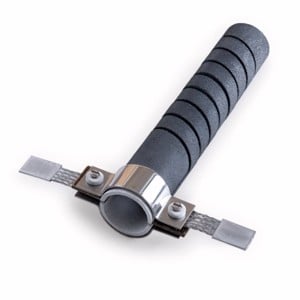Rechercher
Affiner votre recherche
190 résultats
190 résultats pour ”toutes les pages” dans le site web entier
Marques commerciales
Le programme de marque Kanthal® contient des marques déposées pour divers éléments chauffants, alliages et autres produits. Marque commerciale Statut Alkrothal ® Cuprothal ® Ecothal ® Fibrothal ® Globar ® Kanthal ® Kanthal APM ® KanthalMatériel de thermocouple
Fil de thermocouple et bande de thermocouple pouvant être utilisés à une température maximale de 1 260 °C (2 300 °F). Le programme Kanthal comprend des rallonges et des câbles de compensation, ainsi que des tubes de protection thermocouple.
Éléments chauffants Globar® SiC
Éléments chauffants électriques en carbure de silicium conçus pour une température d'élément maximale de 1 625 °C (2 927 °F), disponibles dans une grande variété de tailles et de géométries.
Globar® SG et SR
Globar® SG et SR sont les éléments chauffants en carbure de silicium (SiC) les plus performants de Kanthal.
Organisation
Kanthal est une organisation internationale constituée de deux principales divisions commerciales, desservant un vaste éventail d’applications : Matériaux chauffants et Systèmes de chauffage. Matériaux chauffants La division Matériaux chauffants de Kanthal est axée
Carrières
Intégrez un lieu de travail accueillant, dédié à la formation des employés. Chez Kanthal, nous associons recherche approfondie et attention portée aux clients pour favoriser le développement et œuvrer en faveur d'objectifs verts comme l'électrification.Fours de cémentation
Éléments chauffants électriques, brûleurs de récupération asymétrique et autres produits de technologie de chauffage pour fours de cémentation.
Fours de diffusion
Cassettes de diffusion pour fours de diffusion pour la production de plaquettes de silicium cristallin.
Services d'électrification
L'électricité est un moyen très efficace de chauffage ; vous obtiendrez la même production de chaleur avec moins de puissance. Mais les avantages ne s'arrêtent pas là. Les radiateurs électriques radiants permettent une distribution uniforme de la chaleur,
Mesure de température
Le matériau Kanthal® peut non seulement être utilisé pour générer de la chaleur, mais aussi comme méthode de mesure. Nos matériaux sont utilisés dans les composants thermostats et la mesure thermique.